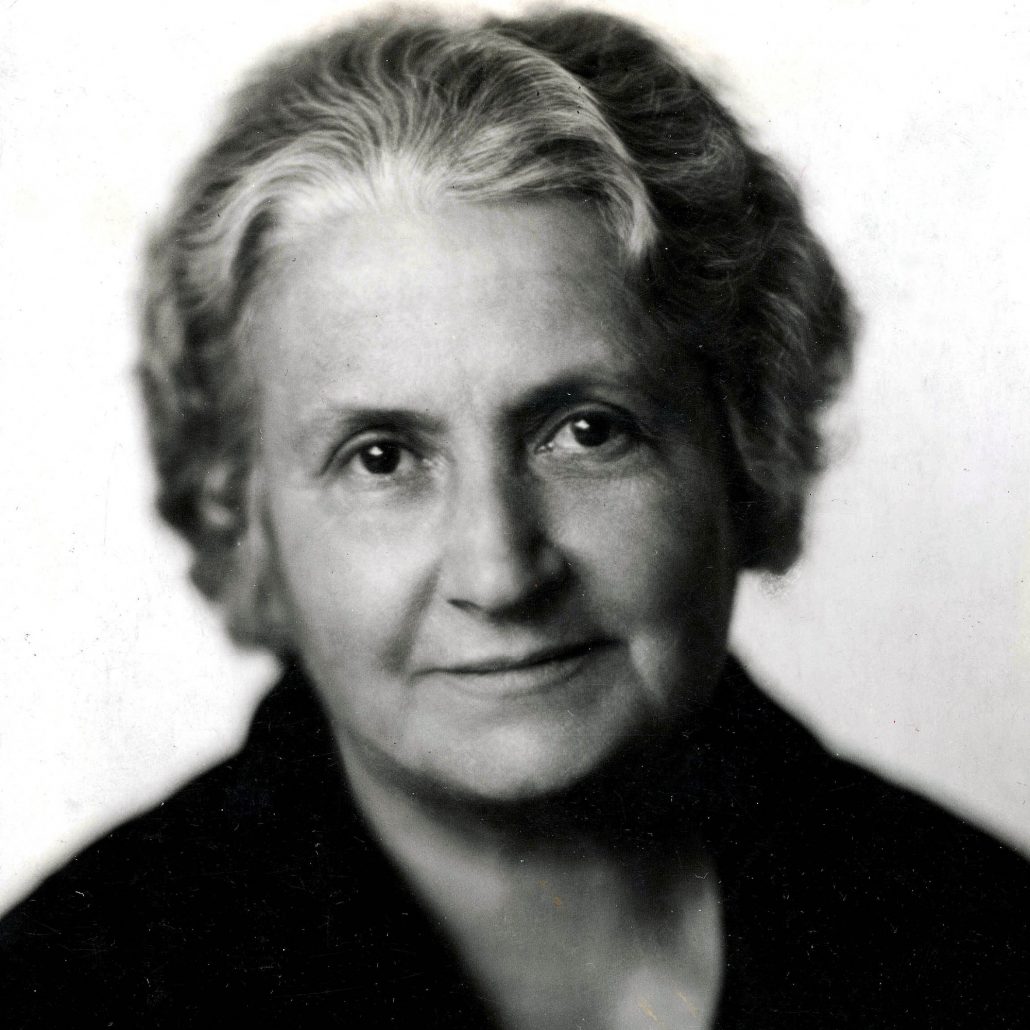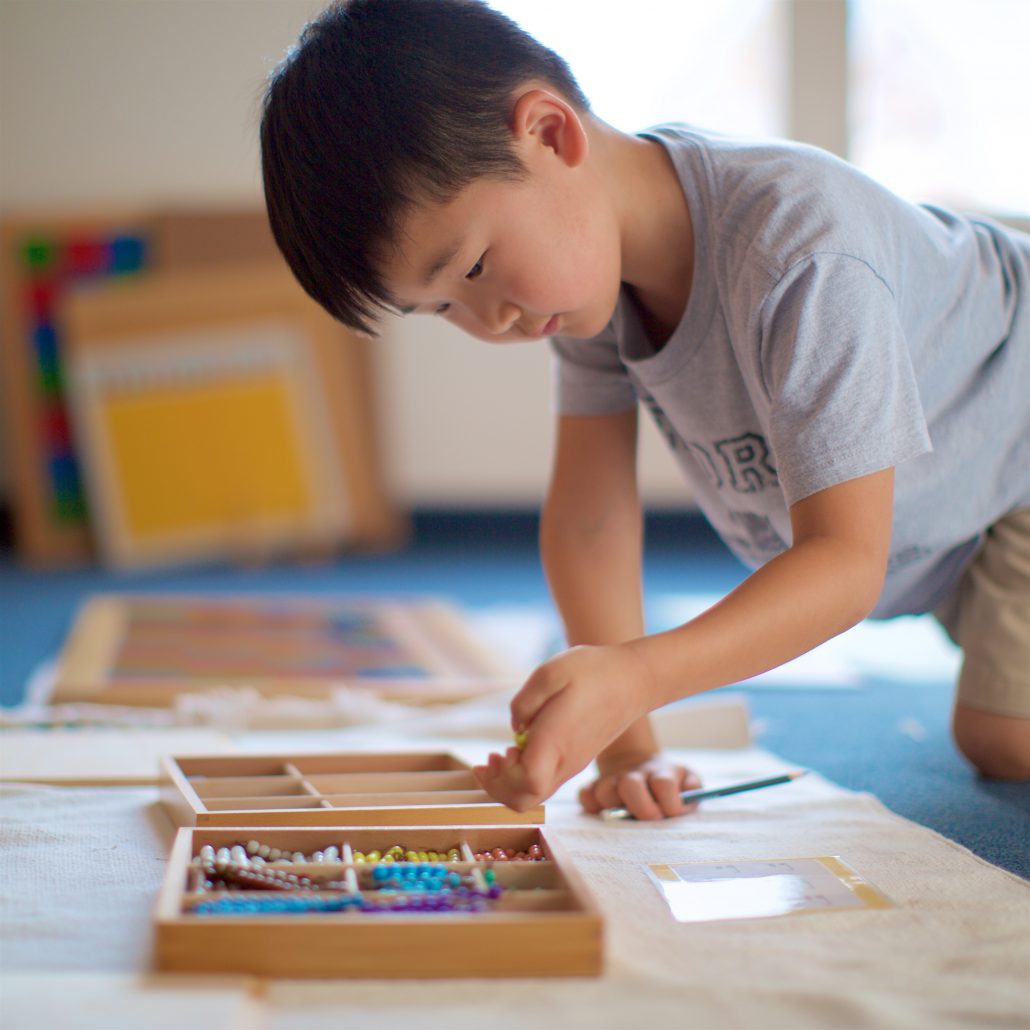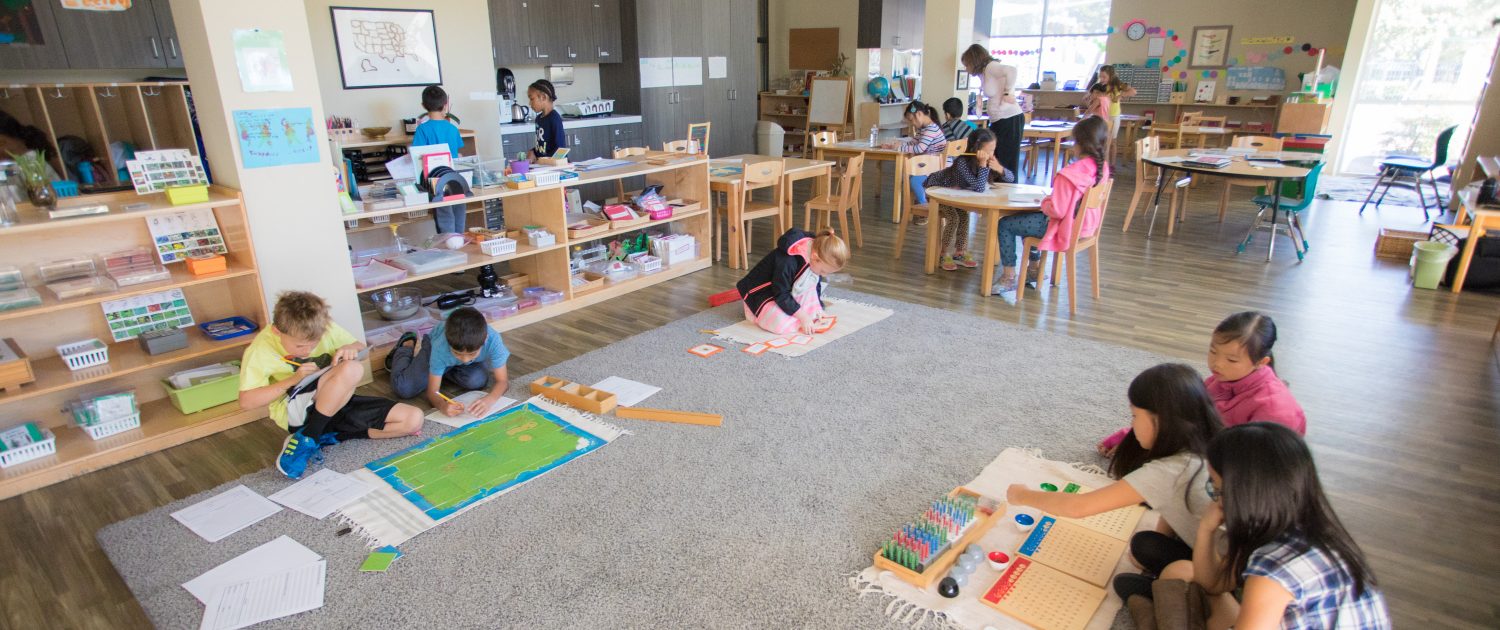Montessori Method for Elementary
How Children Learn in Montessori Elementary
How Children Learn in Montessori Elementary
The essential purpose of a Montessori education is to offer each child an environment in which he can develop the skills and habits he needs for a lifetime of learning and happiness.
Dr. Montessori (1870-1952), the first woman physician in Italy, and a pioneer in early education, recognized the critical importance of childhood learning. She spent many decades creating “The Montessori Method”, an integrated program tailored to meet the developmental needs of young children.
Around age six, children graduate from the Montessori Primary class (preschool/kindergarten) into elementary school. At around six, children change both physically (e.g.,the first permanent teeth come in), socially (e.g., a marked eagerness to work in groups versus individually; children become more social), and intellectually (e.g., they are able to grasp more abstract ideas, and become interested in the whys of things, as well as in fairness). Dr. Montessori described this as children entering a new plane of development.
Naturally, as the child matures and changes, so does an educational program tailored to the child’s needs.
Montessori Elementary is designed to fully engage six- to twelve-year-olds in learning—to leverage their sociability, their curiosity, and their drive to contribute to their community so they can acquire the skills and knowledge they need to flourish in life.


A community of peers, mentors and mentees—a chance to follow and lead.
Nowhere in life but in school do people interact only with same-age peers. In life—and in Montessori—human beings benefit by being around people who know more than us—and solidify our understanding by teaching those who don’t know yet but are eager to learn. In the mixed-age Montessori Elementary communities (ages 6-9 in Lower Elementary, equivalent to 1st – 3rd grade, and ages 9-12 in Upper Elementary, equivalent to 4th – 6th grade), children benefit from the social dynamic of mixed-age groups in multiple ways:
Time to engage deeply, to choose work, and to practice to mastery
In Montessori Elementary, the school day has two long, uninterrupted work periods—usually three hours in the morning (8:30 am to 11:30 am) and two hours (1 pm – 3 pm) in the afternoon.
Here’s what happens during this time:
Individualized learning at each child’s pace, tailored to interests and talents
During the extended work periods, teachers give lessons to children, sometimes to the whole class, but more often in small groups or one-on-one. In this way, a Montessori elementary teacher can teach just to the level that a child or a small group of children are ready for—instead of some children becoming bored, or others struggling to keep up when most lessons are given to an entire class of 20+ children. She can also verify understanding—and each child is more likely to be engaged, because the material meets their needs, and because it is hard to hide in a small group. Groups are put together based on interest, previous knowledge, and talent. For example, a math group may include an advanced 4th grader, several 5th graders, and maybe a sixth grader or two who need a refresher on that particular lesson.

Materials, work spaces, and organizational tools
We all do our best work in a beautiful environment, one that meets our needs. Many elementary age children struggle to sit still at a desk for hours at a time. Children need to move to think and do their best work! Dr. Montessori recognized that—which is why in our classrooms, children can work at a child-sized table (alone or with 2-3 others), or on a rug on the floor, or curled up on a beanbag or a small rocking chair while reading a book. Children are trusted to move about the classroom and attend to their needs (a glass of water, a restroom break, a mid-morning snack)—instead of needing to ask a teacher permission to get up. Shelves, plants, rugs, and worktables define work spaces, where small groups and individuals can work comfortably—instead of the rows of desks common in traditional schools. Beautiful materials, plants, flowers, art and even music playing quietly make a Montessori elementary room a peaceful and inviting work environment.
Responsibility and agency—supported by careful scaffolding—support authentic motivation
Montessori believes that in the right environment, children are eager to learn, and want to do well. As Montessori educators, we believe it is not our role to micro-manage children, but to provide just the right amount of scaffolding and support they need to do their best work, and to be their best selves. We call this approach freedom within limits: it is an approach founded in trust and respect, rather than control and command.
Here are a few ways it plays out in class:
| Area | LePort Montessori Elementary | Traditional Elementary |
| Classroom look & feel | A home-like feel: Wooden shelves separate the space; work tables with 2-4 chairs and rugs on the floor; plants, art in a zen-like, calming look. | Desk in an otherwise open classroom, with a white board up front. Decorations in primary colors, a busy look. |
| Grouping of children | Mixed-age communities, like real-life. General age ranges of 6-9 for Lower Elementary and 10-12 for Upper Elementary—but younger or older children may be present, based on maturity and ability. | Single-age groupings, generally with rigid age cut-offs (e.g., must be 6 by September 1st to enter 1st grade). |
| Schedule | Two long work periods, of three hours in the morning, and two in the afternoon. Children receive lessons—and apply and practice what they learn in class. Time to complete work, to work at one’s own pace, without interruptions. | Fixed schedule, with all children participating in a given subject for a pre-set time (typically an hour or less), then moving on to the next subject. Adult-directed, often tightly-timed transitions, multiple times each day. |
| Motivation | Mainly intrinsic motivation, built on each child’s interest, on curiosity, on making content relevant and engaging, on the joy of mastery, on the natural desire of younger children to do the work they see admired older children do in class. Authentic assessments via portfolios and rubrics-based progress reports. | More emphasis on extrinsic motivation—by grades, sticker charts, green-yellow-red behavior charts, etc.Assessments via graded tests, standardized testing several times per year, and report cards with letter grades. |
| Role of teachers | Teachers act as guides. Sometimes, it takes a minute to spot them in class! They sit with small groups of children for lessons, check in with those working on practicing, and coach older children who take an active role in leading and managing the community (such as facilitating class meetings). | Teachers have a leading role. They often stand while children sit, and are very visible. They direct the learning, calling on children, and moving the class from one subject to the next. |
| Role of children | Children are active community members. They plan their work, and take responsibility for getting it done. They help each other—peer teaching and mentoring are common and encouraged; working together is welcome and not cheating. They take responsibility for solving classroom problems—e.g., by discussing issues in a weekly community meeting and proposing solutions. | Children are generally expected to listen, to pay attention, and to follow the teacher’s direction. They have limited say in where they learn, with whom, what, and when. |
| Curriculum approach | A sequential, clearly-structured curriculum, often embedded in hands-on materials that move slowly from concrete to abstract over the course of elementary. A balance between foundational skills—and rich content in science, geography, history, and the arts. Children move through curriculum at different paces—and have options on which areas to explore deeper, and on what subject matter to practice skills (e.g., what to research, write about, read). | A set of standards set by standardized testing—and a curriculum defined by textbooks adopted by the school, and supported by worksheets and other materials used in class and for homework. Limited freedom of choice for either children or teachers in tailoring content or pace of teaching to the needs of individual students. |
| Educational goals and standards | Enabling children to acquire Knowledge for Life—the essential knowledge, thinking skills and strength of character children need to flourish as joyful children today, and as successful adults tomorrow. | College and career readiness. Achieving annual progress on standardized tests used to measure students’ and schools’ achievements. |
A detailed comparison between Common Core Standards and Montessori Elementary

Please fill out the form to receive additional info, as well as invitations for upcoming event. If you share your phone number, our admissions team will call to answer your questions or set up a tour.
By providing us with your phone number, you consent to being contacted by LePort Montessori and/or its affiliated schools regarding their educational programs, whether such contact is by phone, autodialer, recorded message, or text. Please note: Your consent is not required as a condition of enrollment.
